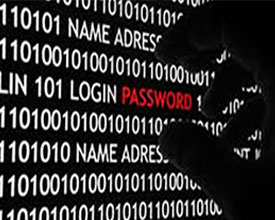Just yesterday, it was reported 6.5 million LinkedIn passwords were hacked and leaked on the Internet. According to the Federal Trade Commission, 9 million Americans face some form of identity theft each year. Out of those 9 million, 56% (5,040,000) did not even know that their data was stolen. With June being appointed “National Internet Safety Month” by the United States Congress, it’s important to know the different types of online identity theft and how you can stay safe from being a victim of these scams.
How do thieves steal identities online?
Phishing: In this scam, thieves pretend to be a company, organization or entity that you’re  familiar with and trust. The communication usually comes electronically via e-mail and instant messaging. The message will lead the victim to a fake web site that resembles a legitimate site. Once there the site will ask for personal information, which will then be collected and used.
familiar with and trust. The communication usually comes electronically via e-mail and instant messaging. The message will lead the victim to a fake web site that resembles a legitimate site. Once there the site will ask for personal information, which will then be collected and used.
Keystroke Logging: This is one of the most sophisticated forms of online identity theft. Basically, it is a program that captures the user’s keystrokes and can be used to steal your usernames, passwords, PINs and other personal information.
P2P File Sharing: Peer-to-Peer (P2P) file sharing enables users to share files on their computers with other users via the Internet. This type of file sharing has been targeted by identity thieves who use the networks to access and download personal information from other users’ computers.
Malware: This malicious software can come in many different shapes and sizes. Viruses, worms, spyware and Trojan horses are just a few types of malware. Malware hides in files attached to an e-mail or is unknowingly downloaded from a web site. It will often install itself on your machine and start transmitting your personal information via the Internet.
Online Shopping: Similar to phishing, identity thieves will replicate reputable online storefronts and web sites. Their hope is that you will “shop” on the site and enable the thieves to capture your personal and financial information.
Data Breaches: Add LinkedIn to the latest number of companies that have experienced a data breach. According to the Privacy Rights Clearinghouse, there were 535 data breaches that were made public in 2011. These breaches affected 30.4 million records.
Free Wi-Fi: In 2010, there were over 70,000 free Wi-Fi hotspots in the United States. Most of these hotspots will not encrypt the information that you send over the Internet. In fact, hackers can potentially use “cookies” from your e-mail to steal your personal information.
How do I protect myself from the theft of online identity theft?
- Never share your personal information via e-mail and be cautious about opening attachments and downloading files. If you suspect that you have received a phishing e-mail, forward it to spam@uce.gov and to the entity impersonated in the message.
- Strengthen your passwords. Some online security experts suggest using at least 10 characters. The password should consist of a mixture of letters, numbers and special characters. Also, don’t use the same password for multiple accounts and never share passwords via e-mail, phone or text. Keep your passwords in a safe, secure place.
- Install reputable security software and enable automatic updates. Hackers and identity thieves are constantly innovating new ways to attack you online.
- Only divulge personal information on encrypted sites. Whether it’s checking your account balance or shopping online, look for https at the beginning of the web address. (The “s” is for secure and shows you that the site is encrypted.) This is a good rule of thumb to follow when you’re accessing the Internet via free Wi-Fi as well.
- Backup your files. This way, if you are victim to an attack you will still have access to your files. Copy your important files to an external hard drive, removable disk or utilize backup to the cloud services to ensure your files are stored in a safe place.
- Watch your credit score. If an identity thief does happen to get a hold of your personal information, you should notice changes in your score.
- Stay informed. These tips should bring some awareness as to the tricks and tools of identity thieves. However, as mentioned earlier new tricks and tools are being invented every day. Do some research online to stay up to date with the latest tactics employed by scammers.